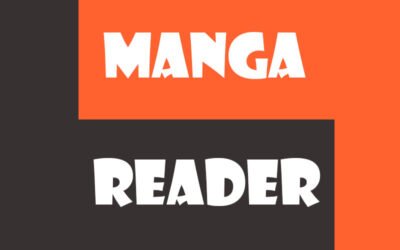If you’re a fan of video games, there’s a good chance you’ve heard of “Halo” – one of the most iconic game series of all time. But today, we’re not just talking about the game itself. We will explore a particular aspect that genuinely sets the original release apart: the “Halo (2003) game icons banners.” These visual elements have played a massive role in shaping the identity of the game and its community. From loading screens to promotional art, these icons and banners are more than just decorations; they represent an era of gaming that set new standards for artistic design.
Let’s explore the unique world of these game elements, from what they represent to how they still inspire creativity today.
The Birth of “Halo (2003) Game Icons Banners”
“Halo: Combat Evolved” was released in 2001, but the rich visual culture around “Halo (2003) game icons banners” really took off after the game gained massive popularity. By 2003, Halo had become more than just a game—it was a cultural phenomenon, and the banners and icons associated with it helped communicate that status to gamers everywhere.
These visuals served as a badge of honor for fans, with players using them as wallpapers, signatures in forums, and much more. The “Halo (2003) game icons banners” represented the game and became symbols of its growing community and culture.
Why Icons and Banners Matter in Gaming
You might wonder why “Halo (2003) game icon banners” matter. Aren’t they just tiny pictures and promotional posters?
Not quite! Here’s why they matter:
- Identity and Branding: The banners and icons represent the game’s identity. They include symbols like the Master Chief’s helmet, the UNSC emblem, and the Covenant logo—all of which became synonymous with the “Halo” universe.
- Emotional Connection: These visual pieces spark nostalgia. Anyone who played “Halo” in 2003 will instantly recognize these banners, which bring back memories of intense firefights and unforgettable multiplayer moments.
- Artistic Inspiration: The “Halo” (2003) game icon banners beautifully designed and inspired fan art, spin-offs, and future games.
Exploring the Types of Game Icons and Banners
The “Halo (2003) game icons banners” can be broken down into a few different types, each serving its unique purpose. Let’s break these down:
- Menu Icons
Menu icons are the minor symbols that greet players when they navigate Halo’s in-game menus. Although they might seem simple, they significantly enhance the user interface experience.
- Functionality and Aesthetic: The menu icons were carefully crafted to be practical and visually appealing. For example, the shield symbol used for the “Settings” menu was more than just a button—it was a piece of storytelling.
- Memorable Designs: The “Halo” (2003) game icon banners featured icons designed with a sci-fi military feel, echoing the more prominent tone of the game itself. This made them memorable to those playing.
- Loading Screen Banners
During loading screens, banners were often displayed, providing critical visuals from the “Halo (2003) game icons banners” collection.
- Bridging the Gap: Back in 2003, loading times were part of the gaming experience, and Halo filled those gaps with captivating banners that kept players engaged. Players could admire the stunning artwork instead of staring at a blank screen.
- Setting the Tone: The banners often depicted epic space battles, looming alien ships, and iconic Spartan armor designed to build anticipation for the following gameplay.
Iconography: Symbolism in “Halo (2003) Game Icons Banners”
The iconography used in “Halo (2003) game icons banners” is one of the reasons these visuals were so powerful. Let’s take a closer look at some of the recurring symbols:
- Master Chief’s Helmet: Perhaps the most recognizable icon, the Master Chief’s helmet symbolizes the strength, resilience, and mystery of the protagonist. The 2003 banners often featured this iconic helmet with battle scars, adding a layer of story.
- UNSC Emblem: The United Nations Space Command (UNSC) emblem was used in various banners and represented humanity’s unified efforts against the alien threat. Its military design with wings and stars gave a sense of hope and order.
- The Covenant Symbols: The various Covenant emblems represented the alien alliance that opposed humanity. Their inclusion in banners showed the diversity of enemies players would face, and their distinct designs contrasted with the UNSC’s symbols.
Emotional Resonance: Why Players Loved These Visuals
The “Halo (2003) game icons banners” weren’t just about visual appeal; they carried emotional weight. Players connected to these banners because they represented a universe that felt alive. They were:
- A Reminder of Victory: Displaying the UNSC emblem on a banner was a reminder of battles won against the Covenant.
- A Sign of Exploration: The sweeping views of alien landscapes made players feel part of something bigger—a universe filled with uncharted territory and untold stories.
A Closer Look at Banner Design
Their detailed and atmospheric design made the “Halo (2003) game icons banners” stand out. Here are some characteristics that made them exceptional:
- Color Schemes: The banners often used a palette that mixed military greens, deep blues, and metallic greys, reflecting the game’s science fiction and army themes.
- Layered Imagery: Many banners used layered imagery, combining characters, vehicles, and planetscapes to create a sense of depth and vastness.
- Texture and Lighting: The designers used texture and lighting expertly to convey realism. The sparkle of Master Chief’s armor or the distant glow of a planet all added to the immersion.
The Process of Creating “Halo (2003) Game Icons Banners”
Designing the “Halo (2003) game icons banners” was no small feat. It required a blend of artistic skill, technical understanding, and storytelling. Here’s a step-by-step look at how these might have been created:
- Concept Art: Designers started with sketches to outline their ideas, focusing on symbols and scenes that captured the spirit of Halo.
- Digital Rendering: Once a concept was approved, they used digital tools to create high-resolution versions of the banners, adding details like textures, colors, and effects.
- Testing and Refining: The banners went through rounds of feedback to ensure they matched the game’s tone and appealed to the audience.
How the Community Used Halo (2003) Game Icons Banners
One of the most incredible things about “Halo’s (2003) game icon banners” is how the community embraced them. Fans didn’t just see these visuals in-game—they used them everywhere:
- Forum Signatures: Back in the early 2000s, forums were a significant gathering place for gamers, and many users featured “Halo (2003) game icons banners” in their signatures.
- Custom Wallpapers: Players also loved turning these banners into custom wallpapers for their PCs, showing their love for the game.
- Clan Emblems: Clans or groups of players would use parts of the icons and banners to create their unique clan symbols, which they used for competitions.
Table: Popular Halo (2003) Game Icon Banners and Their Meanings
Icon/BannerDescriptionMeaning
Master Chief Helmet: The iconic helmet with scratches and battle damage Symbolizes strength, resilience, and mystery.
UNSC Emblem Wings and stars, used in various promotional banners, Represents humanity’s hope and unity
Covenant Ship Silhouette Banner showing looming Covenant ships The ever-present alien threat facing humanity
Warthog Vehicle: The off-road military vehicle in action Adventure, Exploration, and military prowess
Halo Ringworld, The mysterious ring structure, often depicted in banners Exploration and the unknown.
Impact on Future Games and Culture
The influence of “Halo (2003) game icon banners” didn’t stop in 2003. They laid the groundwork for future Halo games and gaming culture. Many modern games use similar banners and icons as part of their promotional strategy, a testament to these visuals’ effectiveness.
Modern Games Inspired by “Halo (2003) Game Icons Banners”
- Destiny: Bungie, the original creators of Halo, went on to create Destiny, a game that uses similarly iconic banners and symbols to immerse players.
- Call of Duty: The use of military emblems and unit symbols in “Call of Duty” can be traced back to the kind of emotional connection that “Halo (2003) game icons banners” successfully forged.
Nostalgia and Collectibility
Another reason “Halo (2003) game icon banners” remain popular is the strong sense of nostalgia they evoke. Today, these banners are often seen in remastered versions, fan projects, and collector’s game editions.
Fan Art and Community Tributes
The community still celebrates these banners through fan art, remakes, and tattoos! These visuals have transcended the game to become a symbol of the golden age of first-person shooters.
- Fan Remakes: Artists within the Halo community often recreate classic banners in high definition, adding new touches while keeping the original spirit alive.
- Homage in New Games: Some modern Halo titles have even featured old banners as Easter eggs, hidden for dedicated fans to discover.
The Legacy of “Halo (2003) Game Icons Banners”
It’s clear that “Halo (2003) game icons banners” are more than just images. They’ve left a legacy that speaks to the power of well-crafted game visuals in building a lasting emotional connection. They represent a time when games were becoming more than entertainment—a culture.
These banners helped define not just the look but also Halo’s feeling. They brought the intensity of battle, the loneliness of space, and the hope of humanity into visual form, making them unforgettable.
Conclusion: Why “Halo (2003) Game Icons Banners” Still Matter
In conclusion, “Halo (2003) game icons banners” were more than just promotional materials—they were vital to the experience. They helped set the mood, told the story, and gave players something to connect with on a personal level. The thoughtful design, emotional resonance, and community adoption of these icons and banners helped create an iconic visual identity in gaming.
Even today, these banners evoke nostalgia and inspire new art and creativity. So, whether you’re an old fan revisiting the series or a newcomer curious about gaming history, “Halo (2003) game icons banners” are a fantastic reminder of how much thought and care went into making the classics that shaped modern gaming.


































